DirectX12 and Doom in the window
The game Volcano vs. OpenGL 4.5 has been interesting for a long time when it comes to testing Doom. Annoyingly, the Creators Update of Windows again presented us with problems when it comes to measuring performance under Doom reliably. However, both OCAT and various PresentMon versions failed. Sure, something could always be measured, but often enough the measurement results then contradicted the subjective impression and also what one was issued ingame or. the hotkey was not recognized at all.
A common workaround is windowed fashion, i.e. the renunciation of the supposedly exclusive full screen. Here the values matched the user experience again and the possible performance loss, if it really existed, was small enough not to really notice it. Of course, we would like to put this ahead of the results, because we deliberately did not test with an older version of Windows 10.
The Radeon Vega FE can't really unfold here and hardly acts faster than the Radeon R9 Fury X, but this also proves that it can't be in window mode. The map fits well between GeForce GTX 1080 and GeForce GTX 1070 – an image that we already know.
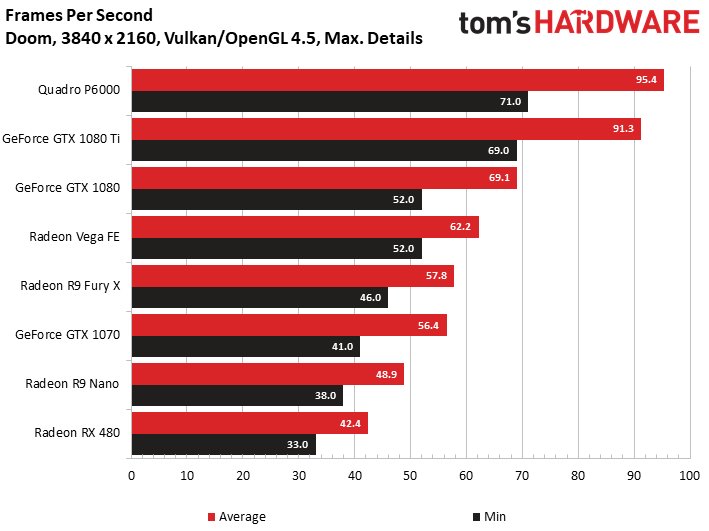
The curves also show the same picture, with the Quadro P6000 and the GeForce GTX 1080 Ti clearly ahead. For example, the GeForce GTX 1080 Ti of the GTX 1080 takes approx. 24%, compared to just under 32% up to Radeon Vega FR. This would then no longer be possible to catch up with a proper increase in the clock alone; here one will probably have to wait for the collated miracle.
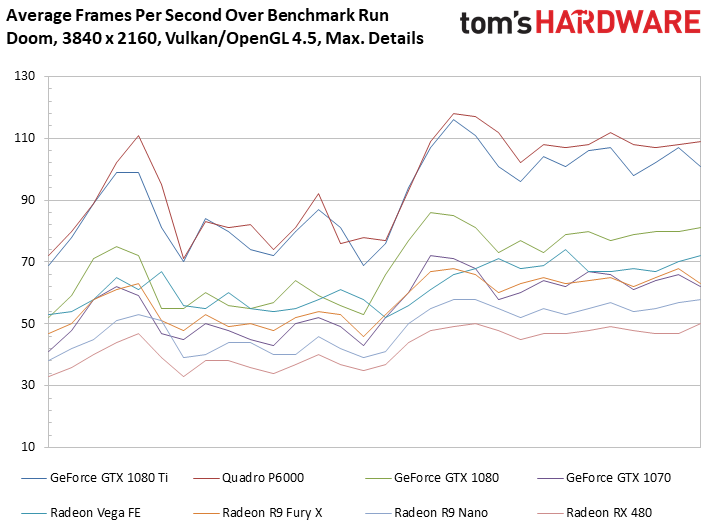
Now let's take a look at the Frame Times. Except for the slightly longer rendering time, all cards actually look quite neat. Only the Radeon RX 480 is completely overwhelmed.
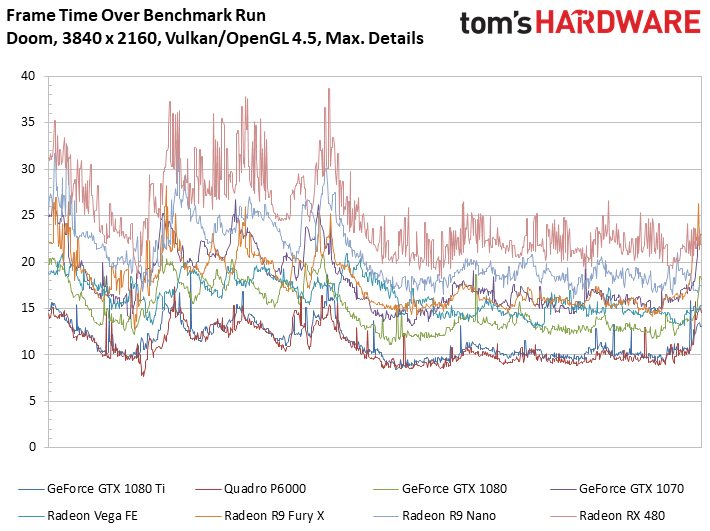
The same is reflected in the corresponding bar graphic:
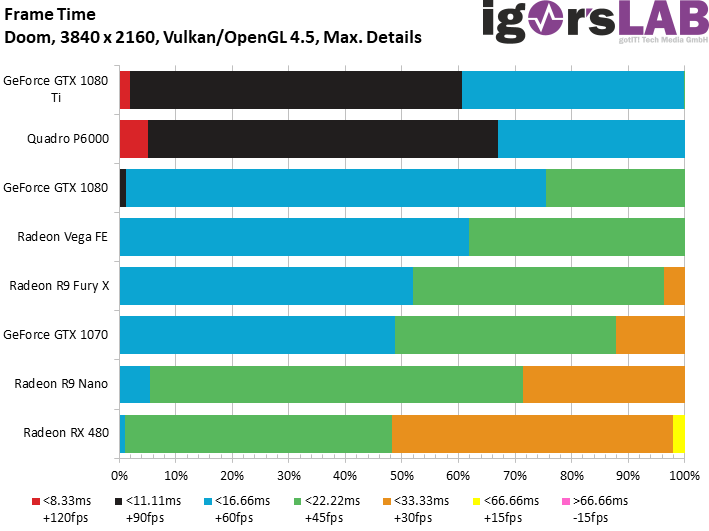
The frame-time variances offer a positive surprise. This is where the Radeon Vega FE performs best:
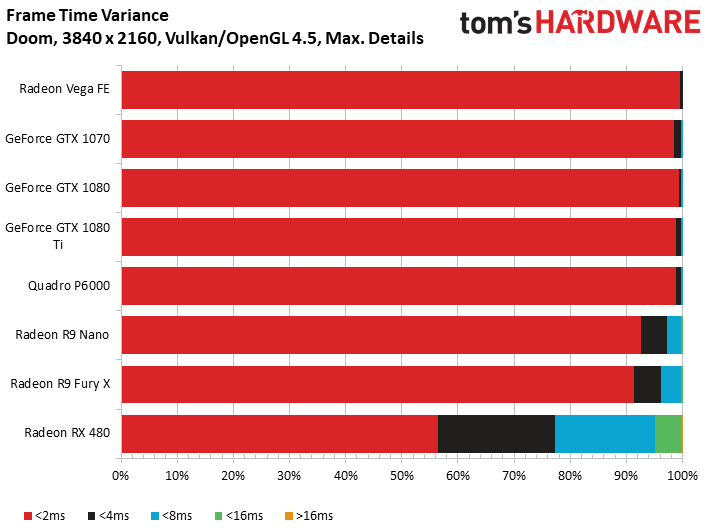
However, the significantly lower overall performance pushes them just behind the GeForce GTX 1080 in the Uneveness index, because nothing can be said about the faster rendering times.
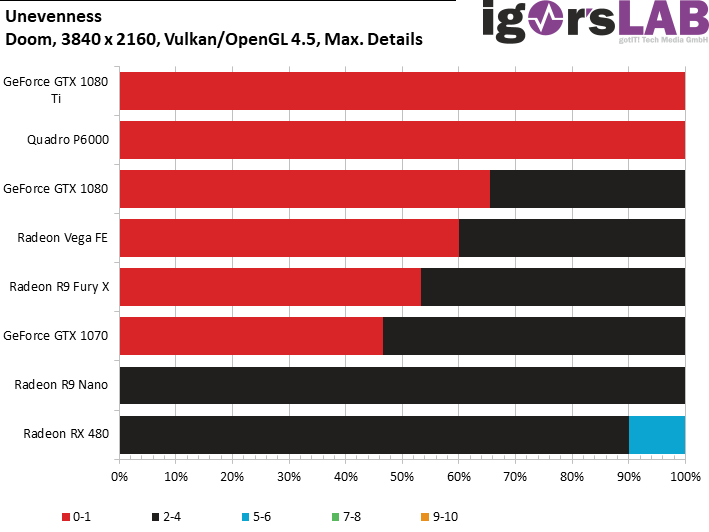
If you want to know exactly, you can browse the gallery for the individual cards again:
Interim conclusion:
We must also save ourselves the conclusion here. But to be fair, Nvidia has been pushing hard at Doom for the OpenGL performance. Despite or because of the Creators update.
- 1 - Einführung und Übersicht
- 2 - Details zu Architektur und HBM2-Speicher
- 3 - Demontage, Kühler und Interposer-Details
- 4 - Platinendesign und Detailinformationen
- 5 - Benchmark-Intro, 2D-Troughput und -Performance
- 6 - 3D Workstation- und Design-Benchmarks
- 7 - Gaming-Performance: DirectX 11
- 8 - Gaming-Performance: DirectX12
- 9 - Gaming-Performance: Vulkan/OpenGL 4.5
- 10 - Leistungsaufnahme im Detail
- 11 - Takt, Temperaturen und Geräuschemission
- 12 - Zusammenfassung und Fazit
































Kommentieren